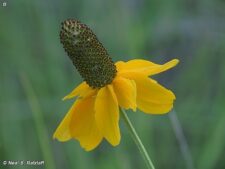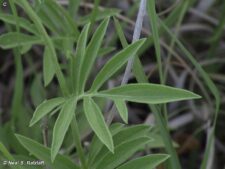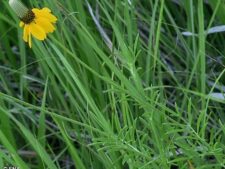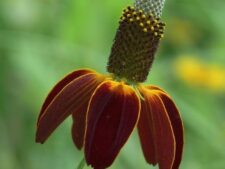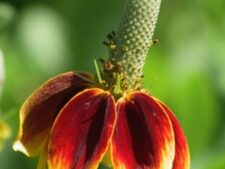
This native perennial has one to several stems 1-2 feet tall. The alternate leaves are divided, sometimes incompletely, into 5-9 opposite segments (C). Single flower heads are on long stalks rising well above the leaves (D). The characteristic cylindrical structure holding the tiny fertile disk florets is 1 1/2 inch long by less than 1/2 inch in diameter, its gray-green color transforming to a deep brown as the flowers mature (A,B). From 4-11 showy, drooping, yellow petal-like ray florets surround the base of the column. Flowers with reddish or purple ray florets sometimes occur (E,F).
Found on drier prairie sites, flowering mainly in June and July, occasionally later. At Neale Woods, it is uncommon in some prairie restorations. Although possible, it has not recently been seen at Fontenelle Forest.
The flowers in our local native prairies have yellow ray florets. The red and purple color variants sometimes called “Mexican hat” are most commonly seen for sale in nurseries and garden centers. They do, occasionally, occur in the wild as well. Photos (E,F) are from Nebraska Prairie at Neale Woods where they were in the seed mix used for the restoration.
Gilmore indicates the Oglala made a tea from its leaves and cylindrical heads.
Other common names include Long-Headed Coneflower and Thimble-Weed.
The content of NatureSearch is provided by dedicated volunteer Naturalists of Fontenelle Forest who strive to provide the most accurate information available. Contributors of the images retain their copyrights. The point of contact for this page is: Neal Ratzlaff.

 Identification
Identification